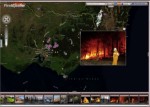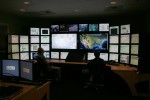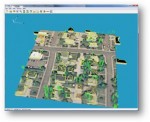
Wednesday, November 21st, 2012
The European LiDAR Mapping Forum (ELMF), which takes place in Salzburg from 4-5 December 2012, is all about innovation and step change in a market which benefits all sectors of the population. The Conference’s objectives are simply to spread the word about the latest advances in the laser scanning and mapping market, launching new technologies

Monday, September 24th, 2012
For many years, major governmental agencies, like the Federal Emergency Management Agency (FEMA) and the National Geospatial-Intelligence Agency (NGA), have been embracing new and innovative ways for accessing and sharing crowdsourced data through social networks. While this is a natural progression for organizations to access data for decision making, it begs the question: is all

Tuesday, September 18th, 2012
Traditional GIS applications have long been a trusted tool of the trade for professionals working in the field of emergency management. Recent advances have led to a greater capability to undertake a holistic approach to incident management utilising much more than the conventional knowledge derived from static maps and GIS silos.

Tuesday, September 18th, 2012
Two well-publicized incursions at heavily protected U.S. facilities this summer illustrate the glaring weaknesses that still remain in high-tech perimeter security systems. Although the breaches were ultimately benign, the incidents at JFK Airport in New York and the Y-12 nuclear weapons plant in Tennessee serve as not-so-subtle reminders of the high stakes involved in safeguarding

Tuesday, July 31st, 2012
The idea for biosensors — using some part of an organism to generate a signal to measure or monitor the presence of a substance — has been around for more than a century. The classic example is the use of canaries in coal mines to detect toxic gasses. Because these tiny birds are so sensitive

Monday, July 2nd, 2012
For thousands of years, humanity has sought to improve its ability to make decisions. Record keeping and information gathering has driven many of the innovations. Better information leads to competitive advantage on the battlefield and in the boardroom. But today, we have a truly 21st century problem: too much information. Or rather, too much data,

Monday, June 25th, 2012
For decades, state and local departments of transportation have collected traffic data by means of a variety of methods — including sub-surface magnetic induction loops, pneumatic hoses laid across lanes, piezoelectric sensors placed alongside roadways, and vehicle counts by human observers. These traditional traffic data collection methods, however, are limited in coverage and expensive to

Monday, June 25th, 2012
Welcome to the inaugural issue of Sensor Sensibility. This column will focus on a number of topics related to sensors ranging from sensor platforms to sensor data, standards to architectures. Sensors are transforming the information ecosystem, providing an opportunity for real-time data acquisition of ambient conditions.

Monday, June 4th, 2012
Today, geospatial data is used in critical decision making across industries and applications – from disaster response to defense and intelligence and natural resource management. When using geospatial data to make critical decisions, it is increasingly important to understand an area of interest from all angles in order to make the most informed decisions possible.

Tuesday, May 8th, 2012
A key component in the global effort to mitigate climate change is to measure and map the amount of carbon stored in forests. This is at the core of the United Nations Collaborative Programme on Reducing Emissions from Deforestation and Forest Degradation in Developing Countries (REDD) and of similar “cap & trade” initiatives in developed